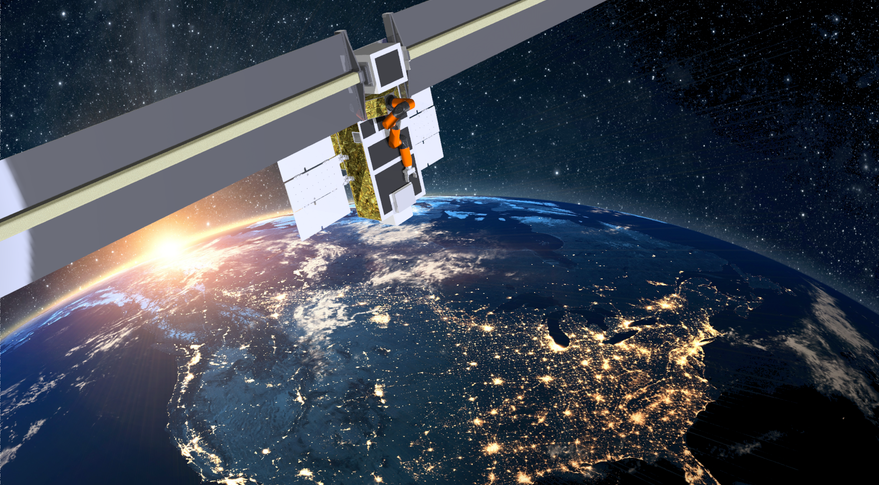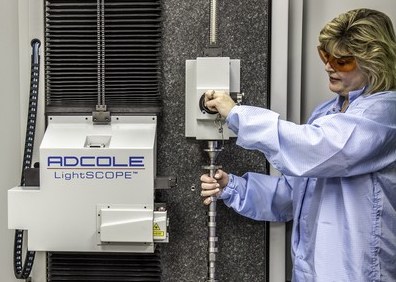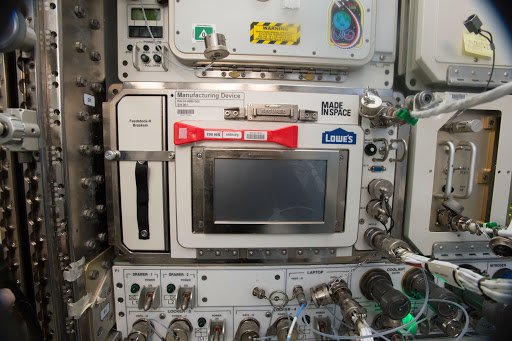Florida-based off-world manufacturing specialist Made In Space (MIS), has been acquired by the aerospace conglomerate Redwire.
MIS, which is known for working with NASA to introduce 3D printing technology into new aerospace applications, will become part of Redwire’s increasing portfolio of space exploration companies. According to Andrew Rush, President and Chief Executive of Made In Space, the deal will see the organization freed from the financial restrictions that come with being a small self-sufficient business.
“Joining Redwire is an exciting opportunity to be part of a new company, taking an innovative approach to address the needs of today’s space industry,” said Rush. “Now, by joining forces with Redwire and having the resources and reach that they bring to the table, it’s really going to unshackle us and let us deliver faster on the possibilities.”

Redwire: A new force in space exploration
Redwire was launched on June 1st 2020 by private equity firm AE Industrial Partners (AEI), in order to combine a number of space technology, supply and development companies in the investors’ portfolio. These include the suppliers of spacecraft components and engineering services Adcole Space and Deep Space Systems (DSS), which were acquired earlier this month.
DSS was involved in developing a robotic lunar lander for NASA, and is part of its Commercial Lunar Payload Services program. Additionally, the company produces integrated spacecraft, spacecraft elements, data acquisition and recovery systems, ground support equipment, and embedded software. Having been formed in 1957, Adacole Space also has a history of space exploration, and played a key role in missions to Mercury, Mars, Jupiter, Saturn, and Pluto.
By merging the businesses, AEI aims to create a “next generation space technology platform” focused on developing mission critical systems and high reliability electronics in support of space architecture. Utilizing its freshly acquired flight heritage, Redwire aims to use its new scale and complementary capabilities, to provide significant value to both companies’ respective customer bases.
“Combining DSS with Adcole Space to form Redwire, will provide opportunities for current employees of DSS to contribute and build a truly one of a kind space company with unlimited potential,” said Steve Bailey, President of DSS. “The combination of our businesses will enable us to offer our customers a one-stop shop for complex space exploration products and services.”

The terms of Redwire’s MIS acquisition
Although the exact financial terms of the deal have not been released, the agreement does include Made In Space Europe, a separate legal entity based in Luxembourg, which focuses on developing space-based robotic systems. As part of the amalgamation, Rush will become the Chief Operating Officer (COO) of Redwire, while Mike Snyder, Chief Engineer at Made In Space, will become Chief Technology Officer (CTO) at the new company.
It’s understood that the arrangement will allow MIS to continue working on existing projects, albeit without the financial constraints of being an independent business. The acquisition also enables the company to expand on its capabilities, as it will now be able to leverage the aerospace technologies provided by other Redwire constituent businesses.
“We were really looking at what would take us to the next level,” said Rush. “We found a common language and a common ground around creating an organization that had both great flight heritage, experience and an innovative approach.”
While MIS and the other Redwire companies will continue operating independently for the time being, they will ultimately be combined, and trade under the same name. Moreover, even though Redwire has been trading for just three weeks, AEI isn’t ruling out further acquisitions.
“We’re going to let it evolve naturally,” said Peter Cannito, Chief Executive of Redwire. “Many of the brands that are involved in Redwire have a lot of history and meaning to their current customer set, so we want to respect that legacy. We’re really trying to build that premier agile middle-market player in space, looking for companies that recognize that they have something really innovative but, by joining Redwire, can accelerate their timelines significantly,” he said.

Made In Space in the 3D printing industry
Founded in 2010, MIS has become a specialist in using 3D printing to create aerospace innovations. In 2017 for example, the company began working with NASA to test a key part of its in-space manufacturing and assembly technology, Archinaut. Using its Extended Structure Additive Manufacturing Machine (ESAMM), the company demonstrated that it could 3D print in the vacuum and temperature environment of space.
MIS’ Archinaut low-gravity truss 3D printing technology was later applied to create a “virtual telescope” in April 2019. The project, which involved linking multiple interferometers together, was designed to help extend scientists’ gaze into space.
The aerospace company is also known for its creative solutions onboard the International Space Station. In October 2019 for instance, MIS partnered with Brazilian petrochemical company Braskem, to develop a plastic recycling facility for 3D printed parts on the station. The facility, nicknamed The Braskem Recycler, is designed to convert plastic waste into feedstock for the 3D printers currently onboard the ISS.
It’s assumed by the terms of the agreement, that MIS will continue to collaborate with the ISS, NASA and other aerospace organizations, while gradually beginning to work under the Redwire brand.
You can now nominate for the 2020 3D Printing Industry Awards. Cast your vote to help decide this year’s winners.
To stay up to date with the latest 3D printing news, don’t forget to subscribe to the 3D Printing Industry newsletter or follow us on Twitter or liking our page on Facebook.
Looking for a job in the additive manufacturing industry? Visit 3D Printing Jobs for a selection of roles in the industry.
Featured image shows a satellite in the Earth’s orbit. Image via MIS.


